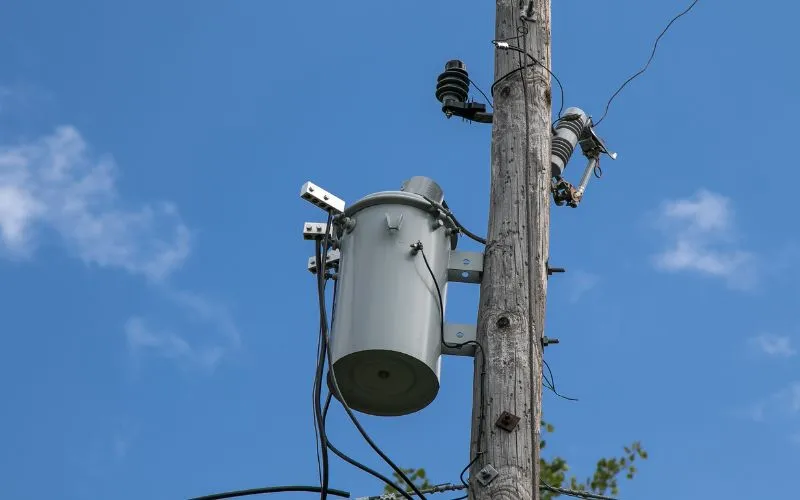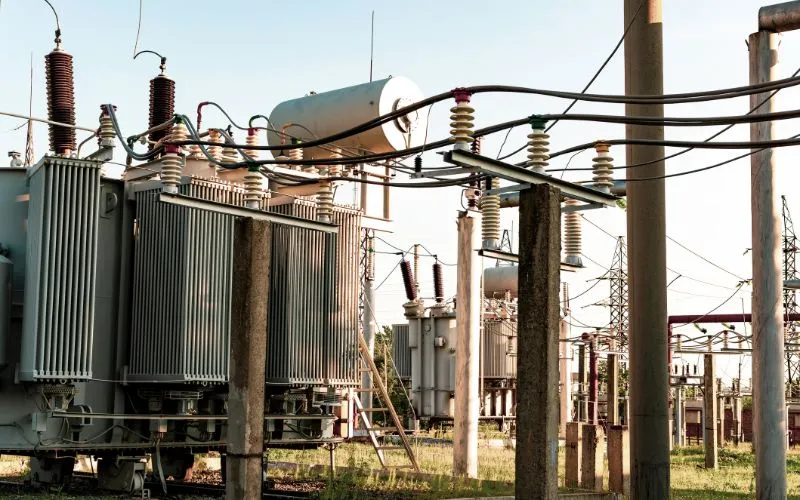
When it comes to electrical energy distribution and voltage conversion, transformers play a central role. Among the different types of transformers, single-phase transformers are essential components in many electrical systems. This comprehensive guide explores the world of single-phase transformers and examines their features, applications, and key specifications.
What is a single phase transformer?

A single-phase transformer is a basic electrical device that transfers electrical energy between circuits using the principles of electromagnetic induction. It consists of two coils, the primary and secondary windings, which are wound around a common iron core.
Define the basics
A single-phase transformer is a type of electrical transformer designed to transmit electrical energy between two or more circuits by electromagnetic induction. Unlike three-phase transformers, which are commonly used in industrial settings, single-phase transformers are primarily used in residential and small commercial applications.
How it works?
A single-phase transformer consists of two coils wound around a common iron core. These coils are called primary winding and secondary winding. When an alternating current (AC) flows through the primary winding, it creates a magnetic field around the iron core. This magnetic field induces a voltage in the secondary winding, allowing electrical energy to be transferred from the primary circuit to the secondary.
Applications of Single Phase Transformers

Thanks to their versatility and efficiency, single-phase transformers are used in countless applications. Here are some general benefits:
Power distribution
One of the most common applications of single-phase transformers is in power distribution systems. They are used to reduce high voltage generated in power plants to a lower voltage suitable for residential and commercial use. This ensures a safe and efficient energy supply for homes and businesses.
Voltage regulation
Single-phase transformers are also used for voltage regulation. You can increase or decrease voltage levels to keep power stable for sensitive devices and equipment. This is critical to prevent damage to devices that require specific voltage levels to function properly.
isolation
Electrical insulation is necessary to protect sensitive devices from voltage spikes and other disturbances. Single-phase transformers provide galvanic isolation between circuits, ensuring that problems in one circuit do not affect the other.
Important Specifications of Single Phase Transformers

To select the right transformer for a specific application, it is important to know the specifications of single-phase transformers. Here are some important specifications to consider:
Voltage value
The voltage rating of a single-phase transformer refers to the maximum voltage it can withstand. It is crucial to choose a transformer with a voltage rating that meets the voltage requirements of the primary and secondary circuits. Otherwise, damage to the device and safety risks may occur.
nominal capacity
The power rating, usually measured in kilovolt-amperes (kVA) or volt-amperes (VA), indicates the transformer's ability to handle electrical energy. It is important to select a transformer with sufficient power to ensure it can handle the load of connected devices without overheating or voltage drops.
number of laps
The turns ratio of a single-phase transformer is the ratio between the number of turns in the primary winding and the number of turns in the secondary winding. This relationship determines how much the voltage is increased or decreased. Choosing a transformer with the correct turns ratio is crucial to achieving the desired voltage transformation.
Efficiency
The efficiency of a transformer indicates how effectively it converts electrical energy from the primary circuit into usable energy in the secondary circuit. Higher efficiency transformers are desirable because they reduce power loss.
Maintenance and safety aspects

Single-phase transformers are essential for many applications, but they also require proper maintenance and safety precautions to ensure their long-term reliability and safe operation. Here are some important considerations:
Regular inspections
Regular inspections of single-phase transformers are essential to detect signs of wear, damage or overheating. Visual inspections may reveal loose connections, corroded components, or oil leaks in oil-filled transformers. Regular thermal inspections using infrared thermography can help detect hot spots that could indicate problems with transformer windings or connections.
Oil check
For oil-filled transformers, testing the dielectric oil is essential to monitor its condition and the insulation of the transformer. Regular oil sampling and analysis can detect contamination, moisture and wear, allowing for timely maintenance and oil changes when needed.
Load monitoring
Monitoring the load of a single-phase transformer is important to avoid overloads, which can lead to overheating and reduced useful life. Current transformers (CTs) and voltage transformers (PTs) can measure load and provide data for load management and protection systems.
Security measures
When working with or near single-phase transformers, safety should always be your first priority. Here are some security measures you should follow:
- Make sure the transformer is de-energized and properly locked and tagged before performing any maintenance or inspection.
- Wear appropriate personal protective equipment (PPE), including insulated gloves and safety glasses, when working near energized equipment.
- Follow safety protocols for handling and disposing of transformer oil, which may contain hazardous substances.
- Provide free access to transformers and provide adequate ventilation when indoors to prevent overheating.
Conclusion
In summary, single-phase transformers are important components in electrical systems, as they allow voltage conversion, power distribution and voltage regulation. Understanding their functions, applications and main specifications is essential to ensure safe and efficient electrical operation. Whether you are an electrical engineer or a homeowner, this knowledge will help you make informed decisions about using single-phase transformers in your projects or in everyday life.
Common questions
1. Can a single-phase transformer be used in three-phase systems?
No, single-phase transformers are designed for single-phase AC systems. They cannot be used directly in three-phase systems. To work in a three-phase system, multiple single-phase transformers can be used in different configurations such as: B. delta-star or star-delta, they can be connected to achieve the desired transformation.
2. What are the common cooling methods for single-phase transformers?
Single-phase transformers generate heat during operation and efficient cooling is essential to prevent overheating. Common cooling methods for single-phase transformers include natural convection, compressed air, and oil cooling. The choice of cooling method depends on the transformer rating and intended application.
3. How do I size a single-phase transformer for my application?
To properly size a single-phase transformer, you must determine the required power rating, voltage rating, and turns ratio based on your specific application. Consider the load's power requirements, voltage requirements, and necessary voltage regulation. It is advisable to consult a qualified electrical engineer or transformer specialist for accurate sizing.

